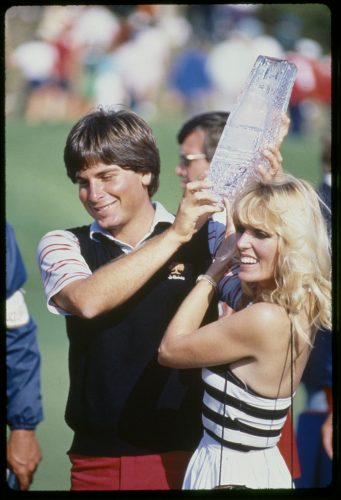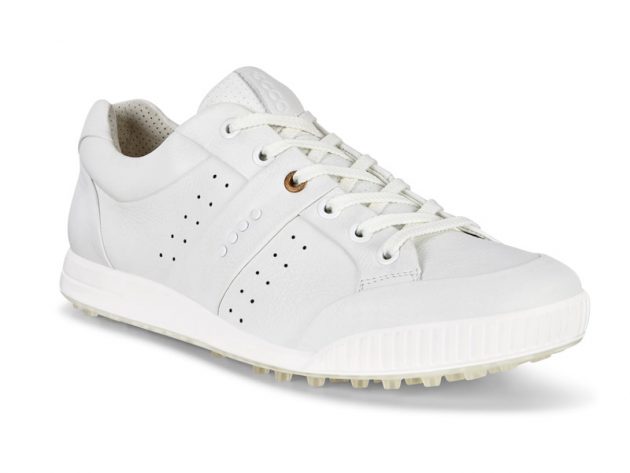Fred Couples Exclusive
Fred Couples’ career saw him glide serenely to World No.1 and a Green Jacket, but it wasn’t always as effortless as he made it look...


Fred Couples’ career saw him glide serenely to World No.1 and a Green Jacket, but it wasn’t always as effortless as he made it look...
Fred Couples Exclusive
It’s hard to imagine Fred Couples feeling like he doesn’t belong. Here’s a man who rolls out of bed, pulls on a smart shirt, strides on to the first tee and effortlessly crunches one down the middle. However, he’s not always been so relaxed.
Believe it or not, Couples was, and in fact still is, rather “skittish”. The wide smiles and the nonchalant doffing of the cap, it’s not all an act – yet it reveals only part of one of the game’s most laid-back characters.
The player known as ‘Boom Boom’ – because of his long, straight driving – arrived on the PGA Tour in 1981. This was an era not lacking in personalities, the likes of Jack Nicklaus, Tom Watson, Raymond Floyd and Lee Trevino among them.
Then there was Johnny Miller, the type of ‘cool guy’ a 20-year-old Couples would seek out just to stare at on the range. In the main, though, he tried to avoid the players he idolised – at least, he says, until he became a much better player.
The memories of those first few seasons on tour are still vivid, one in particular. After a respectable start to his professional career, Couples made his Masters debut in 1983. It was, as it normally is for first timers at Augusta, a learning experience – but one that would prove most valuable.
Subscribe to the Golf Monthly newsletter to stay up to date with all the latest tour news, equipment news, reviews, head-to-heads and buyer’s guides from our team of experienced experts.

“I wasn’t a slow player, but I was nervous that I was holding back the guy who won The Masters twice in the last five years,” he says of the 81 he shot playing alongside Watson. “I just panicked. I was just shocked how great he played, how fast he played and how easy he made golf look.”
It wasn’t long before the young man with the Beatles haircut was making the game look easy himself. The early ‘80s were a pivotal time for golf. As Nicklaus’ domination started to fade, there was a changing of the guard. Fields became stronger, too, and there was a surge of European challengers. It was a good time to make your mark.
Couples’ breakthrough came two months after that first trip to Augusta, at the Kemper Open – although a final-round 77 meant it was no classic. A win is a win, sure, but Couples had something far more entertaining in store.

It came the following season at The Players Championship and TPC Sawgrass, a fine arena to announce your arrival. What a leaderboard it was, too: Couples the winner by one over Trevino, Seve Ballesteros tied third alongside Craig Stadler and Mark O’Meara and Lanny Wadkins a shot further back.
As fate would have it, Couples had Watson for company over the final round. This time, however, he knew he belonged in such esteemed company.
It’s more comfortable rubbing shoulders with the greats of the game when you’ve proven yourself, and there were two players Couples made a point of seeking out.
“Tom Watson and Ray Floyd really helped my game,” he says. “It wasn’t like I called them every three weeks. I would just bump into them and they would tell me stuff. I sucked it all up, probably more of Raymond than Tom, but I really looked up to Tom Watson. He was more of a guy who I idolised.”
Despite Couples’ win at The Players, he added just the one more PGA Tour title in the 80s – the 1987 Byron Nelson Classic. He’d developed a reputation for blowing promising positions.

In 1990, he was on track to land a first Major title at the USPGA at Shoal Creek in Alabama, but he faltered over the closing stages, which allowed Wayne Grady to capitalise. He’s not the type to curse and thump the turf, but as the putts slid by, he lost a little of his swagger. It was a rare sight.
Friendly advice
“Nothing really bothers me for very long after a tournament,” he says, something that you wouldn’t disbelieve for one moment. Around this time, however, Couples was regarded as the best player never to have won a Major. It’s a tag no top player ever wants. He needed to “become a tougher player”, so he leant on a close friend.
“I love Raymond,” he says. No wonder – the titles soon began to flow. The Nissan Open in 1990 stopped the rot, two more victories came in ’91 and two more in the run-up to the ’92 Masters. By the time he reached Augusta, he was riding the crest of a wave at World No.1. This would be his finest hour.
The story could have been quite different, of course, had his ball disappeared into Rae’s Creek on the 12th – as it probably should have. Somehow, against all the odds, after his tee shot looked set for a watery grave, his ball gripped on the bank inches from disaster. The delicate recovery to tap-in range was predictable, as was his reaction.

As the cheers reverberated around Amen Corner, Couples dipped his wedge in the water and casually scooped out another ball. Perhaps it was his way of staying in the moment; whatever, it was pure entertainment, vintage Freddie.
Talk of Couples’ favourite course on the planet evokes a couple of painful memories, too, although he insists he couldn’t say for sure when they occurred. “You’re probably going to laugh, but I know who I lost to,” he says. “I lost to [Mark] O’Meara and I lost to Phil Mickelson and I was playing with them in the last group, but I don’t know what years they were.
The year is irrelevant. Do I know that I won in ‘92? Of course I do, because I’ve heard it 40 million times.”
He’s referring to 1998 and 2006. O’Meara holed a 20-footer on the 72nd hole to deny Couples a second Green Jacket in ‘98, and eight years later he couldn’t buy a putt on the final day and Mickelson prevailed.
On the 14th green, he had the chance to close the gap at the top to one. The patrons were ready to roar, but three putts from four feet brought only groans of despair. It frustrates him to this day. “I know this… Phil knows this, I outplayed him on Sunday, but that’s irrelevant. There were some other chances, but nothing like those two.”
So far as regrets go, that would be it. True, he may have let a few tournaments slip through his grasp over the years, but with back injuries plaguing most of his career, he’s frequently had to play through the pain barrier. Fifteen PGA Tour titles over a 20-year period – the last of which came in 2003 – is not bad going for a guy with a dodgy back.

He’s played on five Ryder Cup teams, too, winning three, including the famous ‘War on the Shore’ in 1991, where he secured three-and-a-half points. However, there’s more to Couples’ legacy than silverware.
A natural talent
The mention of his name conjures visions of that wonderfully smooth swing. He’s always had good rhythm and timing, yet he’s also had his share of swing problems, too.
“My swing got a little bit slow and then long,” he explains. “The over-swinging worked 95% of the time, but when you’re over swinging a little bit and you’re under pressure, it kind of gets away from you.”
With his coach and long-time friend Paul Marchand, there have been times when it’s been necessary to tighten things up. He does this by holding his backswing for a couple of seconds, before making a swing. It’s the go-to drill.
Sadly, he can’t offer many more tips. He’s one of those naturals – as you somehow knew he would be. The technical side of the game is Marchand’s area of expertise.
“Paul never changed my swing. He just tried to tighten it up and get it to where my misses were a bit better, and that’s kind of the game of golf in a nutshell. It’s getting those misses that go in the right trees to go in the right rough.”
Regardless of how he plays, he’ll always look the part, yet he dismisses the idea that he’s been a fashion icon. “Just a lot of khaki pants with a white shirt and a little design on it,” he says. “I like to present myself in a very positive way on the course.” And a fine job he does, too.
Ten years ago, Couples was the centre of attention at Augusta once again, and not just because he was in the mix. It was his Ecco Golf Street shoes that were turning heads.
“When we finished that week I said to Lynn [his agent], something has to get fixed as I’m getting more attention for my shoes than making pars and birdies,” jokes Couples, who had sparked a hybrid revolution.

Right now, he has a good few pairs of the new Ecco Street 10 ready to slip on whenever the 84th US Masters comes along. You sense he’s gearing up for another crack at The Masters.
Let’s hope that back – and that swing of his – stays nice and loose.
Don't forget to follow Golf Monthly on Facebook, Twitter and Instagram.

Michael has been with Golf Monthly since 2008. A multimedia journalist, he has also worked for The Football Association, where he created content to support the England football team, The FA Cup, London 2012, and FA Women's Super League. As content editor at Foremost Golf, Michael worked closely with golf's biggest equipment manufacturers and has developed an in-depth knowledge of this side of the industry. He's a regular contributor, covering instruction, equipment, travel and feature content. Michael has interviewed many of the game's biggest stars, including seven World No.1s, and has attended and reported on numerous Major Championships and Ryder Cups around the world. He's a member of Formby Golf Club in Merseyside, UK.